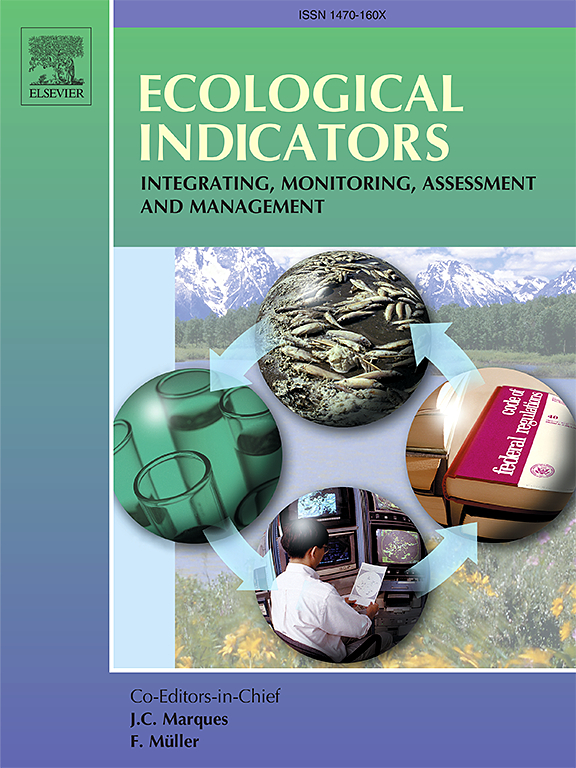The relative productivity index: Mapping human impacts on rangeland vegetation productivity with quantile regression forests
Lomax, Guy A , Powell, Thomas W. R , Lenton, Timothy M , Cunliffe, Andrew M
2025-02-01 null null 171(卷), null(期), (null页)
Rangeland degradation is a persistent decline in the productivity of vegetation that supports wild or domestic herbivores. However, rangelands often exhibit highly variable climates and dynamic, resilient vegetation, making it difficult to discriminate between lasting degradation and natural variability. Here, we introduce a new and flexible index to distinguish management-driven rangeland degradation from the influence of environmental variability using freely available remote sensing-derived datasets. We use quantile regression forests to estimate the potential gross primary productivity as a continuous function of biophysical conditions including climatic, soil and topographic variables. The relative productivity index (RPI) is then defined as the ratio between observed and potential productivity in each grid cell and year. This provides a dynamic reference point against which variation in rangeland condition across space and through time can be quantified consistently within a single framework. We test the method in the arid and semi-arid rangelands of East Africa and compare its performance to three other widely used methods to distinguish management impacts from natural variability: rain use efficiency, local gross primary production scaling, and residual trend analysis. We show that our method outperforms existing approaches both in explaining spatial differences in productivity and in controlling for climatic variability through time. In combination with other remote sensing and field-derived metrics, the rangeland productivity index has the potential to become a valuable indicator for quantifying rangeland condition and supporting sustainable management and utilisation of these landscapes.
相关推荐
- Assessing Model Predictions of Carbon Dynamics in Global Drylands [2025-02-01]
- Allometric Relationships for Predicting Aboveground Biomass, Sapwood, and Leaf Area of Two-Needle Pinon Pine (Pinus edulis) Amid Open-Grown Conditions in Central New Mexico [2025-02-01]
- Allometric Relationships for Predicting Aboveground Biomass and Sapwood Area of Oneseed Juniper (Juniperus monosperma) Trees [2025-02-01]



